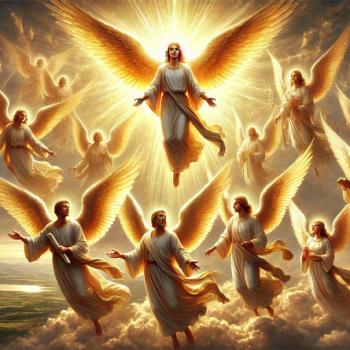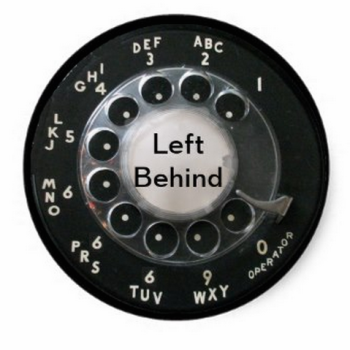Folklorist Charles Leland published a "Gospel of the Witches" in the late nineteenth century that included Lucifer as the brother of Diana. In the book Leland also makes references to Cain, who is conjured at the Sabbat meal in Leland's text. Both Lucifer and Cain, in Leland's book, conform to the essential Judeo-Christian depictions that vilify them. Leland describes Lucifer as "the god of the Sun and the Moon, the god of Light (Splendor), who was so proud of his beauty, and who for his pride was driven from Paradise." Cain is also a figure driven form Paradise, and in old lore is said to be imprisoned on the moon. We previously noted the ancient Greek idea that souls are drawn into the sphere of the moon and then later released into rebirth on the earth. In this light it seems that Cain's punishment is to never reincarnate. This leaves him to forever be who he was in life.
On a side note we must look at the anti-Jewish sentiment in the Middle Ages and the anti-witch feelings of the same period. Transferring Old Testament figures such as Cain and Herodias into European witchcraft seems like an attempt to kill two birds with one stone. This contamination of witchcraft worked very well in tandem with the goals of heresy accusations. Satan was the cherry-on-top, and the formation of Judeo-Christian themes within witchcraft was complete.
In Old World witchcraft there is no embracing of Lucifer, Cain, or Herodias as any connective lineage. These currents (or threads connecting them) may appear in what is often called "traditional witchcraft" and certainly do appear in modern Luciferian witchcraft. The latter is often steeped in imagery reminiscent of the Church's historic depiction of diabolical witchcraft. In contrast with traditional witchcraft and Luciferian witchcraft, Old World witchcraft does not share any roots to Old Testament or New Testament connections with witchcraft (real or imagined). Likewise, it is not connected to any angelic lore such as the "fallen angels" or the Watchers mentioned in the Book of Enoch.
In order to sort out the differences between popular Neo-Pagan views of modern witches and Old Ways witches we must reveal some important tenets. In the modern idea of Wicca as the religion of witches, we find the concept of its membership involved in an earth religion. 59 In other words, these are witches who venerate nature in some manner. Here we find the related idea of the earth as sentient, a goddess often called Gaia.
Old World witchcraft is not a nature religion as envisioned by the Neo-Pagan movement. It is also not a system solely devoted to magic. Witches appreciate and care for nature because they are part of nature. It sustains them, and they must sustain nature in return. In addition, nature provides witches with the plants of their craft and with materials for their ritual and magical tools. Therefore, witches honor their relationship with nature, but this relationship has much deeper levels than stated here.
Witches of the Old Ways draw power from the Hallow.60 This is a term for the deep center of the forest where primal sacredness exists. From this center, power emanates outward to the three realms: above, below and in-between. Power also flows into the Hallow from these realms as well. For modern practitioners this is a concept rather than an actual area in a forest, but the ancient practice of venerating a specific tree in a sacred grove is connected to the theme of the Hallow. In chapters four and five we will encounter the mortar and pestle, a magical tool representing direct connection to, and communication with, the Hallow.
Unlike most modern witchcraft traditions (or systems), the tools used in Old World witchcraft are relatively few in comparison. The classical "four ritual tools of Western occultism" are not incorporated in the same manner as Wiccan tradition. In other words, the pentacle, wand, dagger, and chalice are not primary tools. The main tool of the Old Ways witch is the mortar and pestle. The broom and the cauldron are important tools, as is the ritual dagger. The wand is among the oldest of the witches' tools mentioned in the literary tradition, and it has special uses in Old World witchcraft. All of this is presented in the second half of the book, which contains a grimoire of Old World witchery.
Returning to the idea of a connection to nature, we must note the teachings associated with the sacredness of land, or more correctly, with the spirit of the land. It is an Old Ways teaching that certain areas possess a special nature because of the events that took place upon them. Some obvious examples are those places marked by "standing stones" and other prehistoric monuments, but places connected to death or dying also possess power. This is one of the reasons why cemeteries are featured in old witchcraft traditions.
One of the old beliefs is that spirits of the dead pass into inanimate objects at some point during the transition of the death experience. Markers are set to indicate the place of death and can serve as an interfacing mechanism (to use modern terminology). This principle was once part of the tradition of sanctifying the places where great heroes died or were buried. Such places were regarded as special zones of occult power. Today the presence of headstones in a cemetery reflects the idea of marking places where the dead lie. The ancient practice of laying offerings to "spirit places" seems now extended to placing flowers on a grave site.




